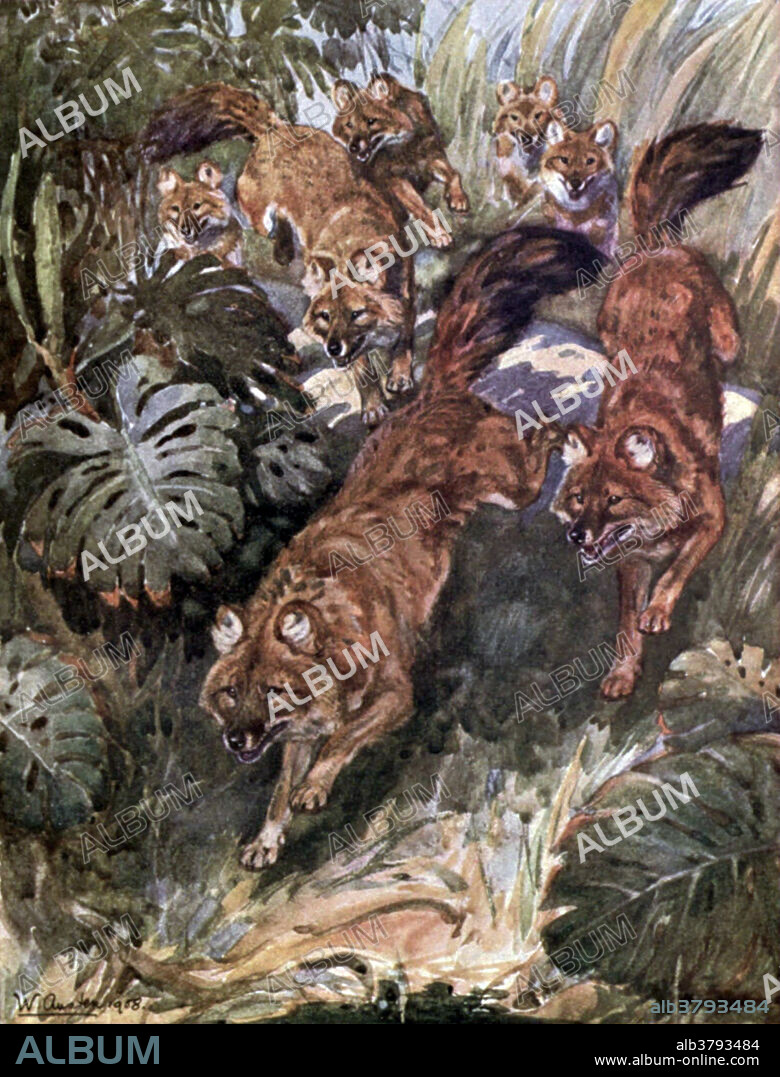alb3793484
Dhole, Endangered Species, Illustration

|
Ajouter à une autre Lightbox |
|
Ajouter à une autre Lightbox |



Avez-vous déjà un compte? S'identifier
Vous n'avez pas de compte ? S'inscrire
Acheter cette image.
Sélectionnez l'usage:

Titre:
Dhole, Endangered Species, Illustration
Légende:
Voir la traduction automatique
The dhole (Cuon alpinus) is a canid native to Central and Southeast Asia. The dhole has been variously described as combining the physical characteristics of the grey wolf and red fox, and as being cat-like on account of its long backbone and slender limbs. The general tone of the fur is reddish, with the brightest hues occurring in winter. Dholes are more social than grey wolves, and have less of a dominance hierarchy, as seasonal scarcity of food is not a serious concern for them. Dholes are primarily diurnal hunters, hunting in the early hours of the morning. They rarely hunt nocturnally, except on moonlit nights, indicating they greatly rely on sight when hunting. Dholes are listed as endangered by the IUCN, as populations are decreasing and estimated at less than 2,500 adults. Factors contributing to this decline include habitat loss, loss of prey, competition with other species, persecution, and disease transfer from domestic dogs. Taken
Crédit:
Album / Science Source / Biodiversity Heritage Library
Autorisations:
Modèle: Non - Propriété: Non
Questions sur les droits?
Questions sur les droits?
Taille de l'image:
2742 x 3600 px | 28.2 MB
Taille d'impression:
23.2 x 30.5 cm | 9.1 x 12.0 in (300 dpi)
Mots clés:
ALIMENT: VIANDE • ANNEES 1990 • ANNEES QUATRE-VINGT-DIX • CHENNAI • FAUNE (ANIMAL) • FAUNE • ILLUSTRATION • INDIEN • INDIENNE • INDIENS • LOUP • MAMMIFERE • MAMMIFÈRES • SAUVAGE • VIANDE • XXE SIECLE
 Pinterest
Pinterest Twitter
Twitter Facebook
Facebook Copier le lien
Copier le lien Email
Email
